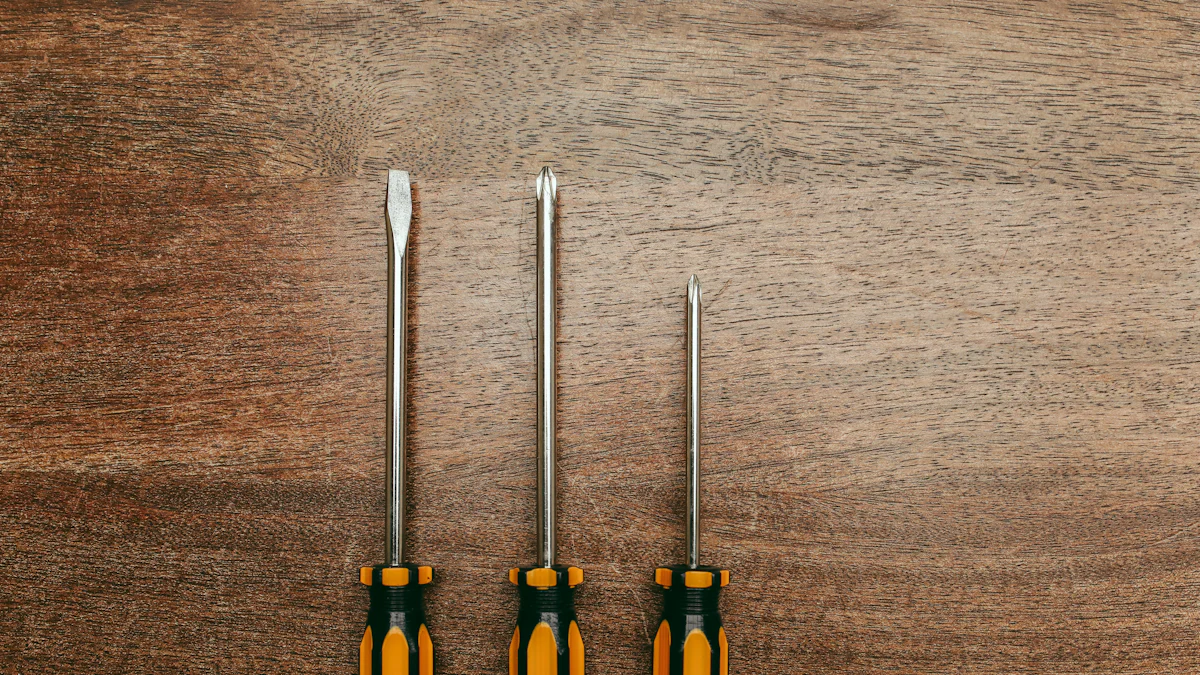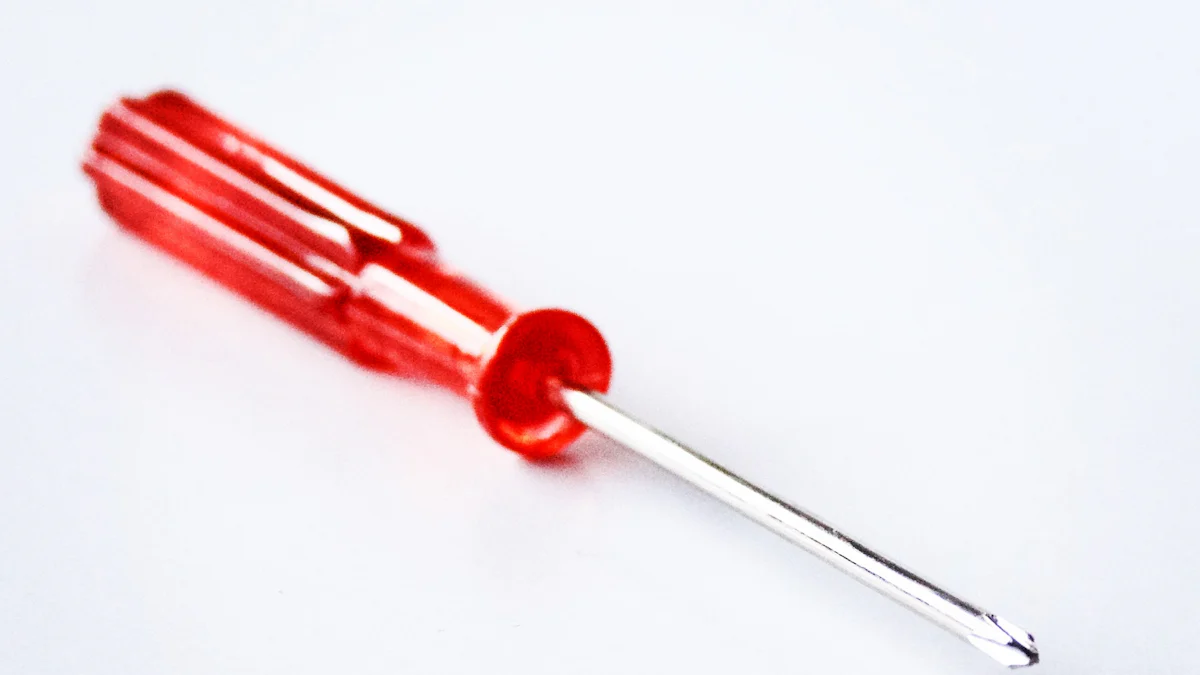
Screwdrivers play a crucial role in various industries. Professionals use these tools for tasks ranging from simple repairs to complex assembly processes. The Japanese Industrial Standard Screwdriver stands out due to its unique design and functionality. Understanding different types of screwdrivers ensures the correct tool is used for each specific application. This knowledge prevents damage and increases efficiency in any project.
Historical Context of JIS Screwdrivers

Origin and Development
Early History of Screwdrivers in Japan
The use of screwdrivers in Japan began in the early 20th century. Japanese craftsmen adapted Western tools to suit local needs. The demand for precision tools grew as industries expanded. Early screwdrivers often lacked standardization, leading to inefficiencies.
Establishment of the Japanese Industrial Standard
In the 1950s, the Japanese government established the Japanese Industrial Standard Screwdriver. This standard aimed to improve tool design and functionality. The JIS ensured compatibility with specific screw types used in Japanese products. This move significantly enhanced the quality and reliability of tools in various industries.
Evolution Over Time
Technological Advancements
Technological advancements played a crucial role in the evolution of the Japanese Industrial Standard Screwdriver. Manufacturers introduced new materials and production techniques. These innovations increased the durability and efficiency of JIS screwdrivers. The sharper tips and narrower blade spaces set JIS apart from other screwdrivers.
Adoption in Various Industries
Various industries quickly adopted the Japanese Industrial Standard Screwdriver. The automotive industry, including brands like Honda, benefited from the precision and fit of JIS screwdrivers. Electronics manufacturers also found JIS screwdrivers indispensable for assembling delicate gadgets. The widespread adoption underscored the importance of using the correct tool for each application.
Technical Specifications
Design and Features
Unique Characteristics of JIS Screwdrivers
The Japanese Industrial Standard Screwdriver features a unique design. The tips of JIS screwdrivers are sharper than those of other screwdrivers. This sharpness allows for a precise fit with JIS screws. The blades have narrower spaces, which enhances the tool’s grip on the screw head. This design reduces the risk of cam-out, where the screwdriver slips out of the screw head. The Japanese Industrial Standard Screwdriver also allows the operator to control torque and prevent over-tightening.
Comparison with Phillips Screwdrivers
Phillips screwdrivers differ significantly from JIS screwdrivers. Phillips screwdrivers have rounded tips, which can lead to cam-out under high torque. The Japanese Industrial Standard Screwdriver prevents this issue due to its sharper tips. JIS screwdrivers fit JIS screws perfectly, while Phillips screwdrivers may not. Using a Phillips screwdriver on a JIS screw can damage the screw head. The Japanese Industrial Standard Screwdriver ensures a secure and efficient operation.
Material and Durability
Types of Materials Used
Manufacturers use high-quality materials for JIS screwdrivers. Common materials include chrome vanadium steel and stainless steel. These materials provide strength and durability. The Japanese Industrial Standard Screwdriver often features ergonomic handles made from durable plastics or rubber. These handles offer a comfortable grip and reduce hand fatigue during prolonged use.
Longevity and Maintenance
The Japanese Industrial Standard Screwdriver boasts impressive longevity. Proper maintenance can extend the tool’s lifespan. Regular cleaning prevents rust and corrosion. Storing the screwdriver in a dry place also helps maintain its condition. Periodic inspection ensures that the tool remains in good working order. The Japanese Industrial Standard Screwdriver offers reliable performance for many years when properly cared for.
Practical Applications

Common Uses
Automotive Industry
The Japanese Industrial Standard Screwdriver finds extensive use in the automotive industry. Mechanics rely on these tools for tasks involving Japanese vehicles. Brands like Honda and Toyota use JIS screws in their assembly lines. The precision of the Japanese Industrial Standard Screwdriver ensures a perfect fit with these screws. This precision prevents damage to the screw heads and enhances the efficiency of repairs and maintenance.
Electronics and Gadgets
Electronics manufacturers also benefit from the Japanese Industrial Standard Screwdriver. Devices such as cameras, laptops, and smartphones often contain JIS screws. Technicians use JIS screwdrivers to assemble and repair these delicate gadgets. The sharp tips and narrow blade spaces of the Japanese Industrial Standard Screwdriver provide a secure grip. This design reduces the risk of damaging sensitive electronic components during assembly or repair.
User Experiences
Customer Reviews
Customer reviews highlight the effectiveness of the Japanese Industrial Standard Screwdriver. Many users praise the tool’s precision and durability. One customer mentioned that the JIS screwdriver made repairing a Honda motorcycle much easier. Another user appreciated the comfortable grip of the handle during prolonged use. These positive experiences underscore the importance of using the correct tool for specific applications.
Expert Opinions
Experts also recognize the value of the Japanese Industrial Standard Screwdriver. Professional mechanics and technicians recommend JIS screwdrivers for working with Japanese products. Experts note that the unique design of the Japanese Industrial Standard Screwdriver prevents cam-out. This feature makes JIS screwdrivers ideal for high-torque applications. The endorsement from professionals further validates the reliability and efficiency of the Japanese Industrial Standard Screwdriver.
Advantages and Disadvantages
Benefits of Using JIS Screwdrivers
Precision and Fit
The Japanese Industrial Standard Screwdriver offers unmatched precision. The sharp tips fit perfectly into JIS screws. This precise fit reduces the risk of stripping screw heads. The design ensures efficient torque transfer. Users experience fewer instances of cam-out. The Japanese Industrial Standard Screwdriver provides a reliable grip on the screw head. This reliability enhances the quality of work.
Versatility
The Japanese Industrial Standard Screwdriver proves versatile in various applications. Mechanics use these tools in the automotive industry. Electronics technicians rely on them for delicate gadgets. The ergonomic handle design suits prolonged use. The Japanese Industrial Standard Screwdriver adapts to different tasks seamlessly. This versatility makes it a valuable tool in any toolkit.
Potential Drawbacks
Availability and Cost
The Japanese Industrial Standard Screwdriver may not be readily available everywhere. Specialty stores often carry these tools. Online platforms offer a wider selection. The cost of JIS screwdrivers can be higher than standard screwdrivers. The high-quality materials contribute to this cost. Users must consider the investment for specific applications.
Compatibility Issues
The Japanese Industrial Standard Screwdriver fits JIS screws perfectly. However, compatibility with other screw types may pose issues. Using a JIS screwdriver on non-JIS screws can damage the screw head. The design of the Japanese Industrial Standard Screwdriver targets specific screws. Users must ensure the correct match for optimal performance.
Understanding the Japanese Industrial Standard Screwdriver proves essential for various industries. The unique design and functionality of the Japanese Industrial Standard Screwdriver ensure precision and efficiency. Professionals should consider the Japanese Industrial Standard Screwdriver for specific applications, such as automotive and electronics. Choosing the right tool for the job enhances performance and prevents damage. The Japanese Industrial Standard Screwdriver stands out as a reliable and valuable tool.
See Also
Discovering the Assortment of Socks for Males and Females
